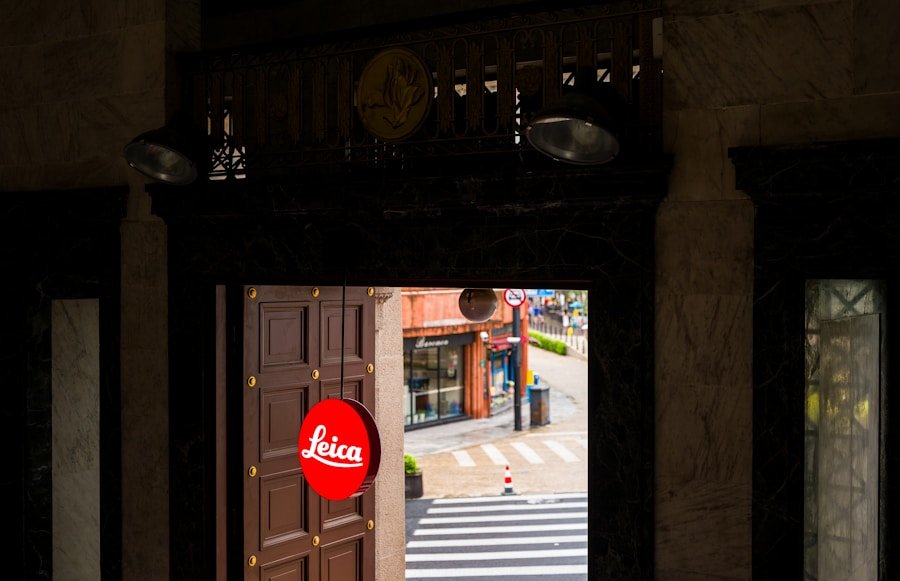In recent years, there has been a significant rise in the adoption of circular branding within the wellness industry. Circular branding refers to the practice of creating products and services that are designed to be sustainable, environmentally friendly, and socially responsible. This approach has gained traction as consumers become more conscious of the impact their purchasing decisions have on the planet and their own well-being. Wellness brands are increasingly recognizing the importance of adopting circular branding as a means to differentiate themselves in a crowded market and appeal to a growing segment of environmentally conscious consumers.
The rise of circular branding in wellness can be attributed to several factors. First, there is a growing awareness of the environmental and social impact of consumer products. Consumers are increasingly seeking out brands that align with their values and are committed to sustainability. Second, there is a shift in consumer behavior towards more mindful consumption. People are becoming more conscious of the products they use and are seeking out brands that offer sustainable and ethical options. Finally, there is a growing body of research that supports the benefits of sustainable and environmentally friendly products for personal health and well-being. As a result, wellness brands are recognizing the need to embrace circular branding as a means to stay relevant and meet the evolving needs of their consumers.
How Sustainability is Driving Success in the Wellness Industry
Sustainability has become a key driver of success in the wellness industry. Consumers are increasingly seeking out products and services that are not only good for their personal well-being but also for the planet. As a result, wellness brands that embrace sustainability and circular branding are finding themselves at a competitive advantage. These brands are able to attract a growing segment of environmentally conscious consumers who are willing to pay a premium for products that align with their values.
The success of sustainability in the wellness industry can be seen in the growing number of brands that are embracing eco-friendly practices and promoting their commitment to sustainability. From organic skincare products to sustainable yoga apparel, wellness brands are finding innovative ways to incorporate sustainability into their offerings. This has not only helped these brands differentiate themselves in a crowded market but has also led to increased customer loyalty and trust. In addition, sustainability has become a key differentiator for wellness brands, helping them stand out in a competitive landscape and attract new customers who are seeking out environmentally friendly options.
The Impact of Circular Branding on Consumer Behavior
Circular branding has had a significant impact on consumer behavior within the wellness industry. As consumers become more aware of the environmental and social impact of their purchasing decisions, they are increasingly seeking out brands that align with their values and offer sustainable options. Circular branding has helped to shift consumer behavior towards more mindful consumption, with people becoming more conscious of the products they use and the impact they have on the planet.
The impact of circular branding on consumer behavior can be seen in the growing demand for sustainable and environmentally friendly products within the wellness industry. Consumers are actively seeking out brands that offer eco-friendly options, whether it’s organic skincare products, sustainable activewear, or ethically sourced supplements. This shift in consumer behavior has led to an increased focus on sustainability and circular branding within the wellness industry, with brands recognizing the need to adapt to meet the evolving needs of their customers. As a result, circular branding has become a key driver of consumer behavior within the wellness industry, shaping purchasing decisions and driving demand for sustainable products and services.
Case Studies: Successful Wellness Brands Embracing Circular Branding
Several wellness brands have successfully embraced circular branding, setting an example for others in the industry. One such brand is Patagonia, a leading outdoor apparel company that has long been committed to sustainability and environmental responsibility. Patagonia has implemented circular branding by using recycled materials in their products, reducing waste in their supply chain, and promoting repair and reuse over disposal. This commitment to circular branding has not only helped Patagonia differentiate itself in a crowded market but has also led to increased customer loyalty and trust.
Another successful case study is The Body Shop, a global beauty brand that has been at the forefront of ethical and sustainable practices for decades. The Body Shop has embraced circular branding by using natural and ethically sourced ingredients, promoting fair trade practices, and advocating for animal welfare. This commitment to sustainability has helped The Body Shop attract a loyal customer base that values ethical and environmentally friendly products.
The Role of Innovation in Circular Branding for Wellness Brands
Innovation plays a crucial role in the successful implementation of circular branding for wellness brands. As consumer demand for sustainable products continues to grow, brands must find innovative ways to incorporate sustainability into their offerings. This requires creativity, forward thinking, and a willingness to challenge traditional business practices. Innovation in circular branding for wellness brands can take many forms, from using new materials and production methods to rethinking supply chain logistics and packaging.
One example of innovation in circular branding is the use of recycled materials in product design. Many wellness brands are finding creative ways to incorporate recycled materials into their products, whether it’s using recycled plastic bottles for activewear or repurposing waste materials for skincare packaging. This not only helps reduce waste but also appeals to environmentally conscious consumers who are seeking out sustainable options.
Another example of innovation in circular branding is the adoption of new production methods that minimize environmental impact. From waterless skincare formulations to energy-efficient manufacturing processes, wellness brands are finding innovative ways to reduce their carbon footprint and promote sustainability throughout their supply chain.
Challenges and Opportunities in Implementing Circular Branding for Wellness Brands
While there are many opportunities associated with implementing circular branding for wellness brands, there are also several challenges that must be addressed. One of the main challenges is the cost associated with sustainable practices. From sourcing eco-friendly materials to implementing new production methods, there can be significant upfront costs associated with embracing circular branding. However, this challenge also presents an opportunity for brands to differentiate themselves and appeal to a growing segment of consumers who are willing to pay a premium for sustainable products.
Another challenge is the need for education and awareness around circular branding. Many consumers may not fully understand what circular branding entails or why it’s important. Wellness brands must take on the responsibility of educating their customers about the benefits of sustainability and the impact of their purchasing decisions on the planet. This presents an opportunity for brands to build trust and loyalty with their customers by being transparent about their commitment to sustainability.
The Future of Circular Branding in the Wellness Industry
The future of circular branding in the wellness industry looks promising as consumer demand for sustainable products continues to grow. As more people become aware of the environmental and social impact of their purchasing decisions, they will increasingly seek out brands that offer sustainable options. This presents an opportunity for wellness brands to differentiate themselves in a crowded market and attract new customers who value ethical and environmentally friendly products.
In addition, advancements in technology and innovation will continue to drive the adoption of circular branding within the wellness industry. From new materials and production methods to innovative packaging solutions, there are many opportunities for brands to find creative ways to incorporate sustainability into their offerings.
Overall, the future of circular branding in the wellness industry is bright, with increasing consumer awareness driving demand for sustainable products and services. As more brands embrace circular branding, they will not only differentiate themselves in a competitive market but also contribute to a more sustainable future for the planet and its inhabitants.

